In a major pivot, developer Jay Paul Company has decided to convert a large portion of the ongoing CityView Plaza project from office to residential. The site, at the northeast corner of Almaden Boulevard and Park Avenue in Downtown San Jose, will transform an existing four-office building campus into 320 units, rebooting construction on the project, which paused last year due to poor market conditions.
Per the Chronicle’s reporting, San Jose Mayor Matt Mahan has described the project shift as “one of the largest commercial to residential conversion in the country.” Commercial-to-residential conversion, which has been much talked about since the decline in office work during the pandemic, has yet to take off in the Bay Area. This new project in San Jose will mark one of the first and largest so far for the region.
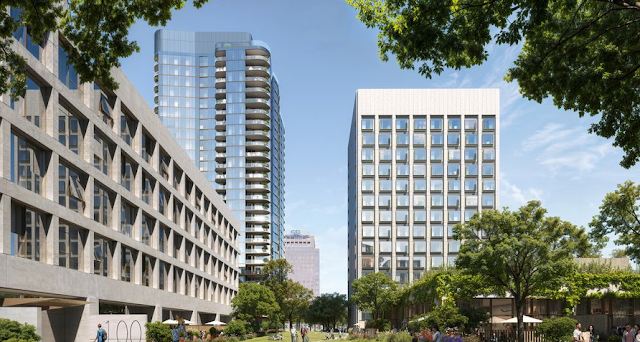
Rendering of To-Be-Converted Offices and Future Residential Tower, image by SCB
The original project was approved by the San Jose City Council in June of 2020, and the use shift has not made any changes to the number or size of the planned buildings. Beyond the to-be-converted offices, the project will also include a 27-story high-rise residential tower, not yet completed, with a further 360 residential units. The CityView location is not entirely forgoing commercial spaces, the current 15-story 204,000 square foot office building at 150 Almaden is slated for renovations and the greater site will also include 35,000 square feet of future retail space.
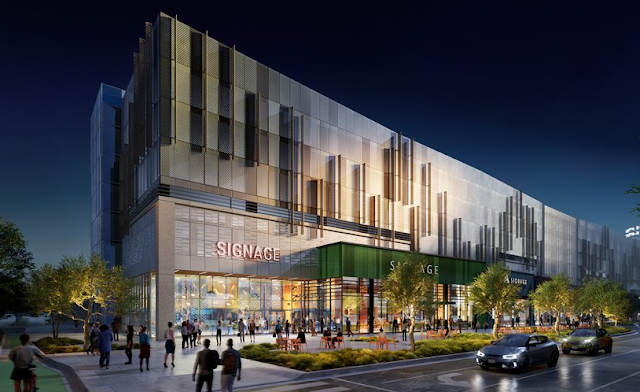
Rendering of Retail Facade at City View, Image by DES
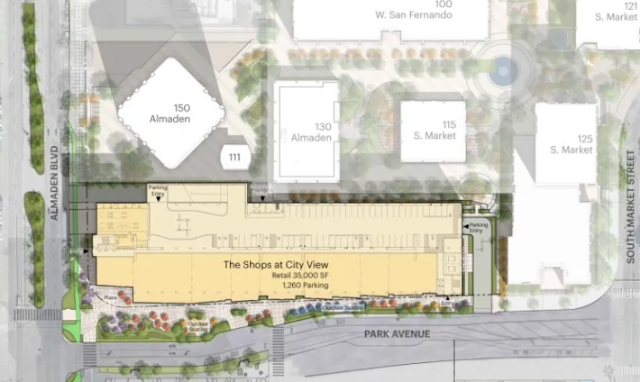
Site Plan at City View, image by DES
In addition the the close retail access and easy walkability of Downtown, new residents of the converted buildings will have access to shared green spaces, a fitness and wellness center, and a rooftop pool. The previous office designs also included a large subterranean parking garage, which may be repurposed to use for either the residential or retail developments on the site.
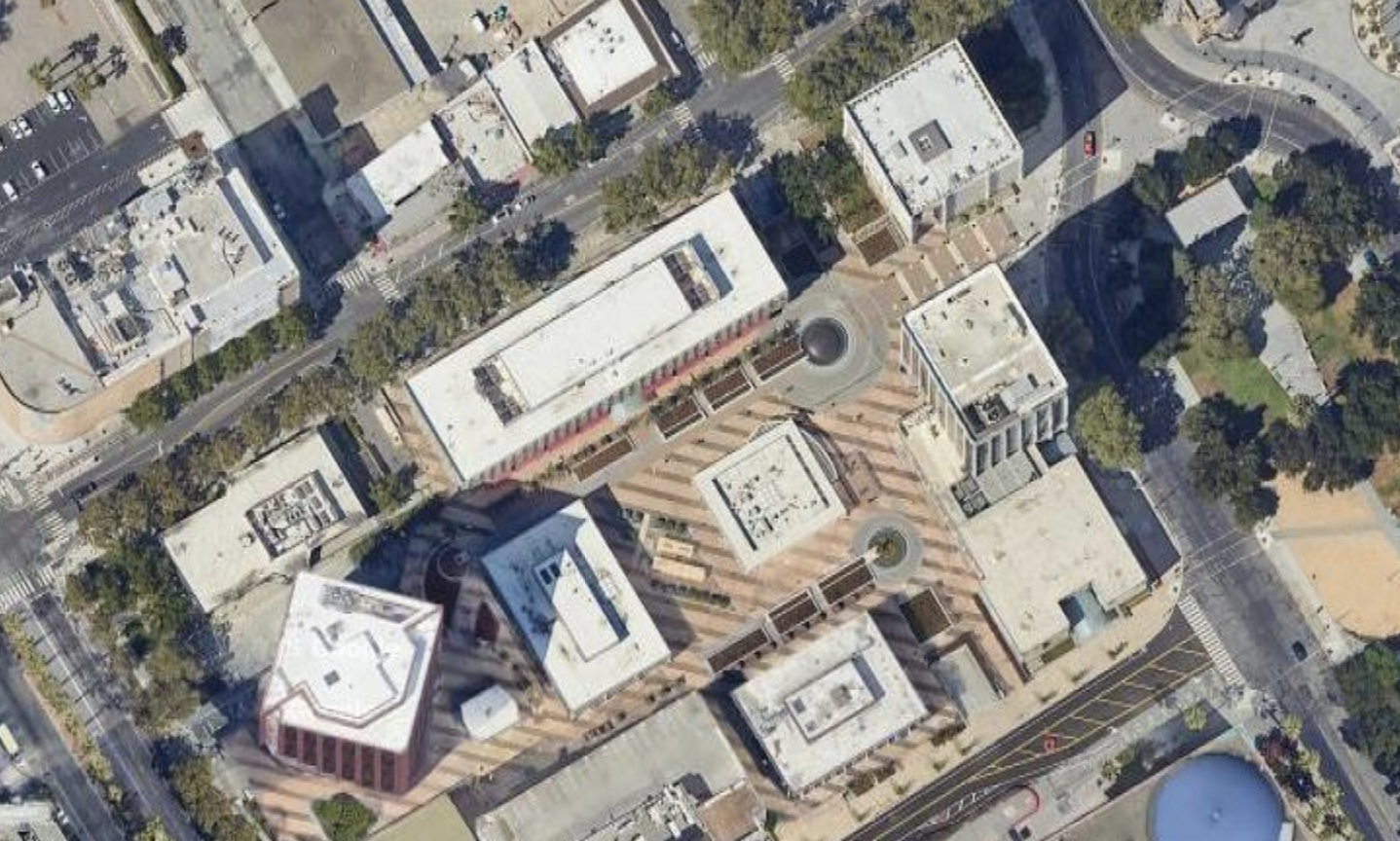
Aerial View of CityView Plaza, image via Google Maps
Subscribe to YIMBY’s daily e-mail
Follow YIMBYgram for real-time photo updates
Like YIMBY on Facebook
Follow YIMBY’s Twitter for the latest in YIMBYnews

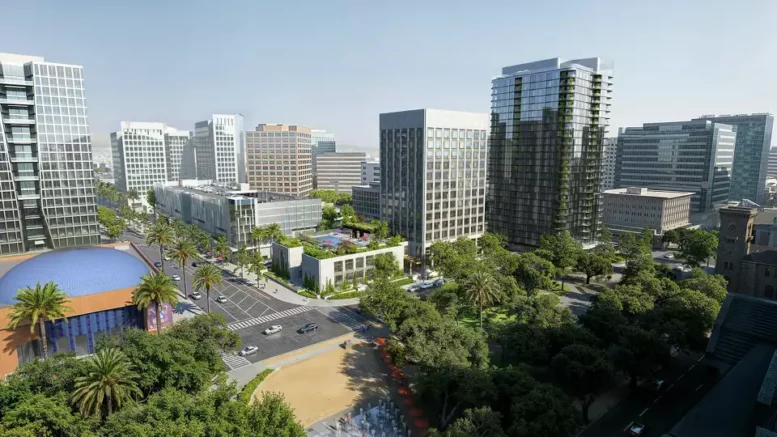
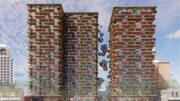
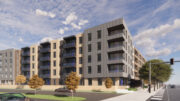
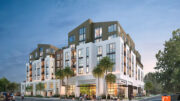
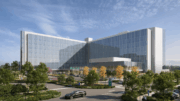
Relatedly, KB Home just purchased a vacant building on the site of the Bishop Ranch office hub in San Ramon, after key tenants like Chevron moved out, for $58 million with plans to demolish it and replace it with 100 new homes.
But what are the fickle, feckless developers operating in San Francisco doing with their time and capital? Have they gotten the memo that they should be developing housing, not office space? Nope!
Related California is “pushing ahead with ambitious plans for a 41-story luxury office-and-hotel tower development in The City’s north Financial District” that will add no less than 350,000 square ft. of office space and 7,400 square feet of retail to The City’s inventory by 2030.
Lendlease, the developer behind the failed Hayes Point tower that has been an empty hole since 2023 is in the process of being granted an amendment to its previous project approval which jettisons the agreed upon on-site affordable housing and increases the previous plan for office space on the second-floor by over 18,800 square ft. (for a total of 252,905 gross square ft.).
All of this office space when they know, according to that Summer 2024 report released by Avison Young, that under any scenario where leasing activity is less than that recorded during the early 2010s, The City’s office vacancy rates will not return to under double digits until 2033 and probably as far out as 2042. In short, S.F. will be oversupplied with office space for the better part of the next decade or two.
I would rather that people who are net tax payers actually move out of SF and into the burbs. Force SF to compete with the burbs for a change. In a telework era for the tech industry, San Ramon, San Jose, Livermore, etc. become more competitive.
Just read the article in my inbox this morning, “How Cities Are Turning Empty Offices Into Housing—and What It Really Takes to Make It Work”, covering several cities/projects as case studies of more or less success in this endeavor. They discuss projects in cities including St Louis, Houston, Pittsburgh, Stamford, LA and Winston-Salem. Although both financial feasibility and city regulations are big hurdles to overcome, this is what SF city officials developers SHOULD tackle – esp. since empty office buildings can ultimately drag the economy further down with them, due to shrinking tax base. Its not an easy task, but SF’s relatively compact downtown and abundance of smaller footprint buildings that are good candidates for conversion offer a great starting place…Obviously the bottom line has to pencil out, but SF’s much higher than average resi real estate valuation should make conversion more feasible than most places.
“The precious office designs”
LOL. ‘Previous’ misspelled as ‘precious’. I had just watched some Hobbit content on YouTube before this too.